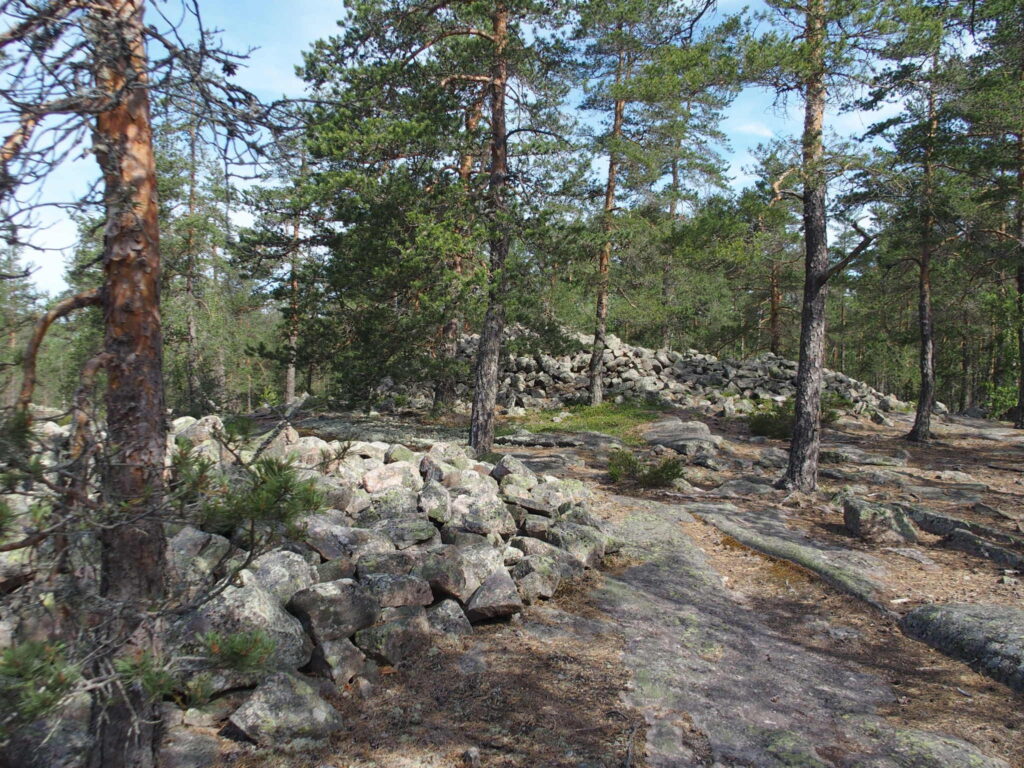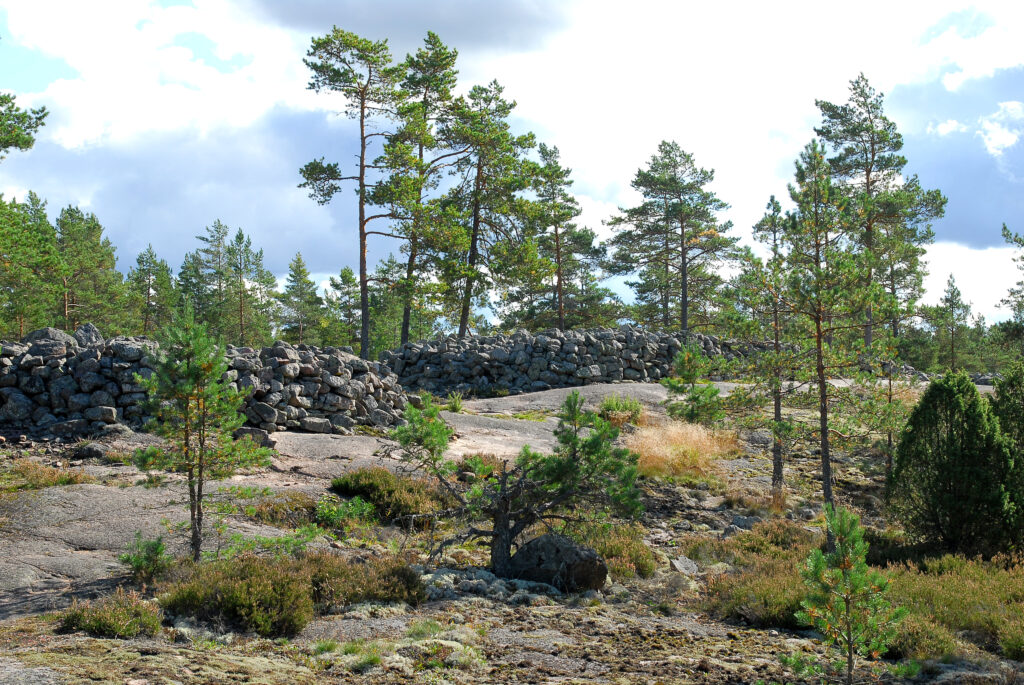Bronze Age and Sammallahdenmäki
Sea water washes the coastline. High bare cliffs rise above it. On the surface of the rock the eye can distinguish cairns of piled stones. The sun shines brightly. People are climbing the foothills with fruits of the forests in their hands. Further away smoke rises to the sky bringing with it a delicious fragrance, children’s voices and pig’s grunts.


Travel in time to the Bronze Age
When it comes to Early Bronze Age Satakunta differentiates from the rest of Finland in the abundance of discovered burial cairns and other archaeological finds. The area was closely connected with especially Scandinavia but other Europe as well, and the dagger of Lappi’s Vahala is a good example of obvious relations to areas in Northern Germany or Denmark.
In Early Metal Age people’s livelihoods were more and more based on animal husbandry and agriculture. The climate was warm and dry during the Stone Age but it gradually started to become colder and wetter, which affected the vegetation as well, for example deciduous forests dominated by hardwood gave way to spruce forests. Due to the ground elevation new land gradually rose from the see and small islands became attached to the mainland. However, the environment and the landscape transformed slowly and people living around Sammallahdenmäki probably did not notice the change during one generation. For us today, the most visible remains of the ancient culture of Sammallahdenmäki are burial cairns built of stone which often conceal a cremated body. These burial methods were changes brought by the Bronze Age and they remained popular far to the Iron Age.
Lappi’s Sammallahdenmäki was designated as a UNESCO World Heritage Site in 1999 and it is the first archaeological site in Finland that has been added to the World Heritage List. The site consists of altogether 36 burial cairns and, in addition, two dwelling sites have been discovered nearby in Kivikylä. The oldest cairns that have been studied date back to the Bronze Age 1300-1000 BCE while the youngest ones are from the beginning of the Iron Age 170 BCE–82 CE. The dwelling sites in Kivikylä date back to the beginning of the Iron Age as well.